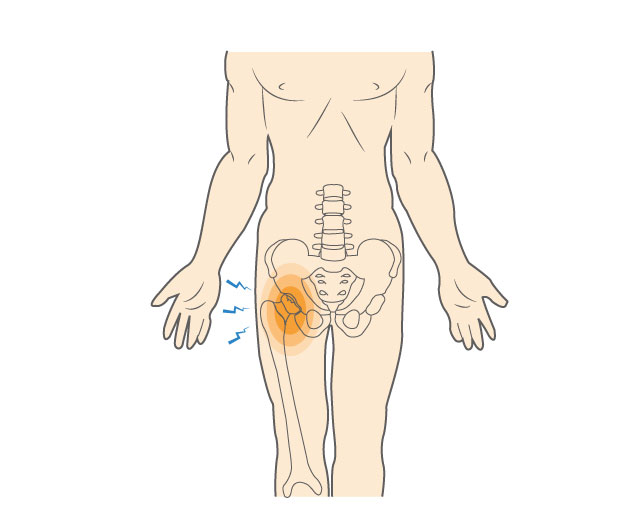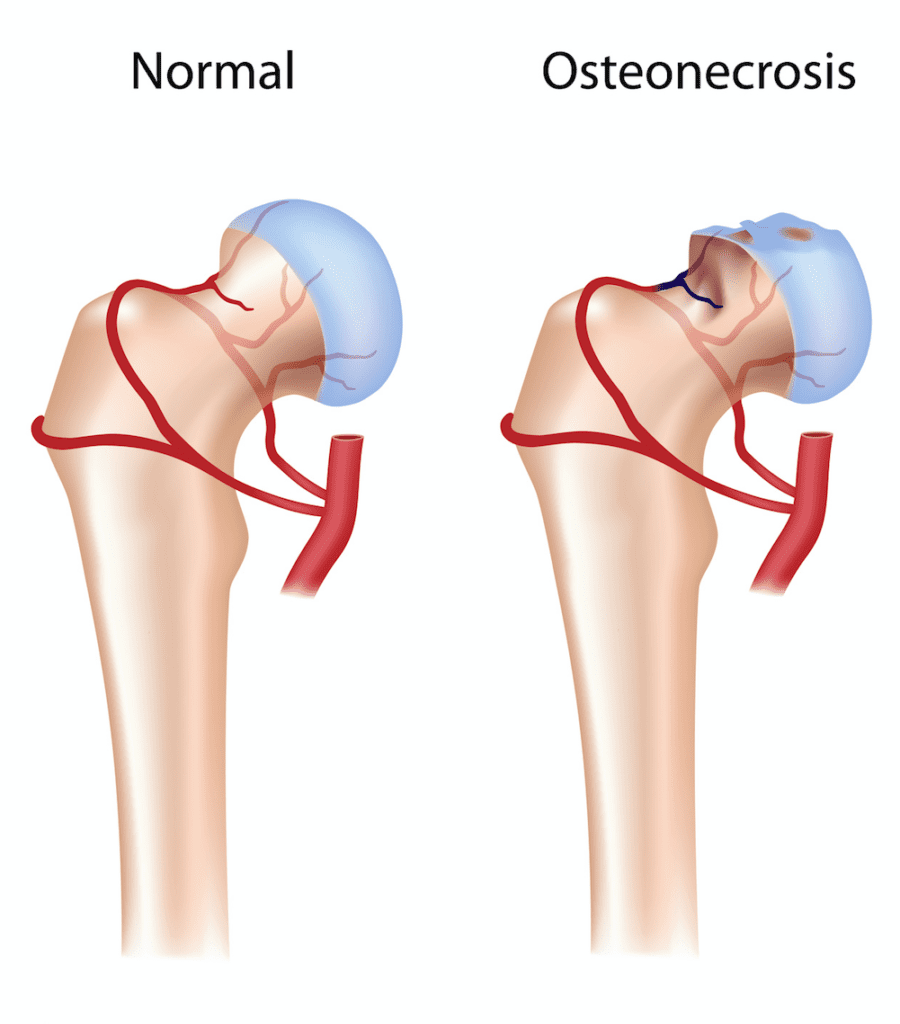The hip is often referred to as a “ball and socket” joint. The ball, at the top of the thigh bone (called the femur), fits into the socket (the acetabulum) in the pelvic bone. The ball of the femur can occasionally lose its blood supply and, like a heart attack involving the heart muscle, the bone will die. This is called Avascular Necrosis (AVN) of the femoral head (also known as osteonecrosis). Approximately 20,000 people are diagnosed with AVN of the hip each year.
This condition is painful and left untreated, the femoral head can collapse and destroy the hip joint. This is not a condition related to repetitive trauma and as such, athletes in general are not at increased risk of AVN unless they suffer a severe traumatic injury.



